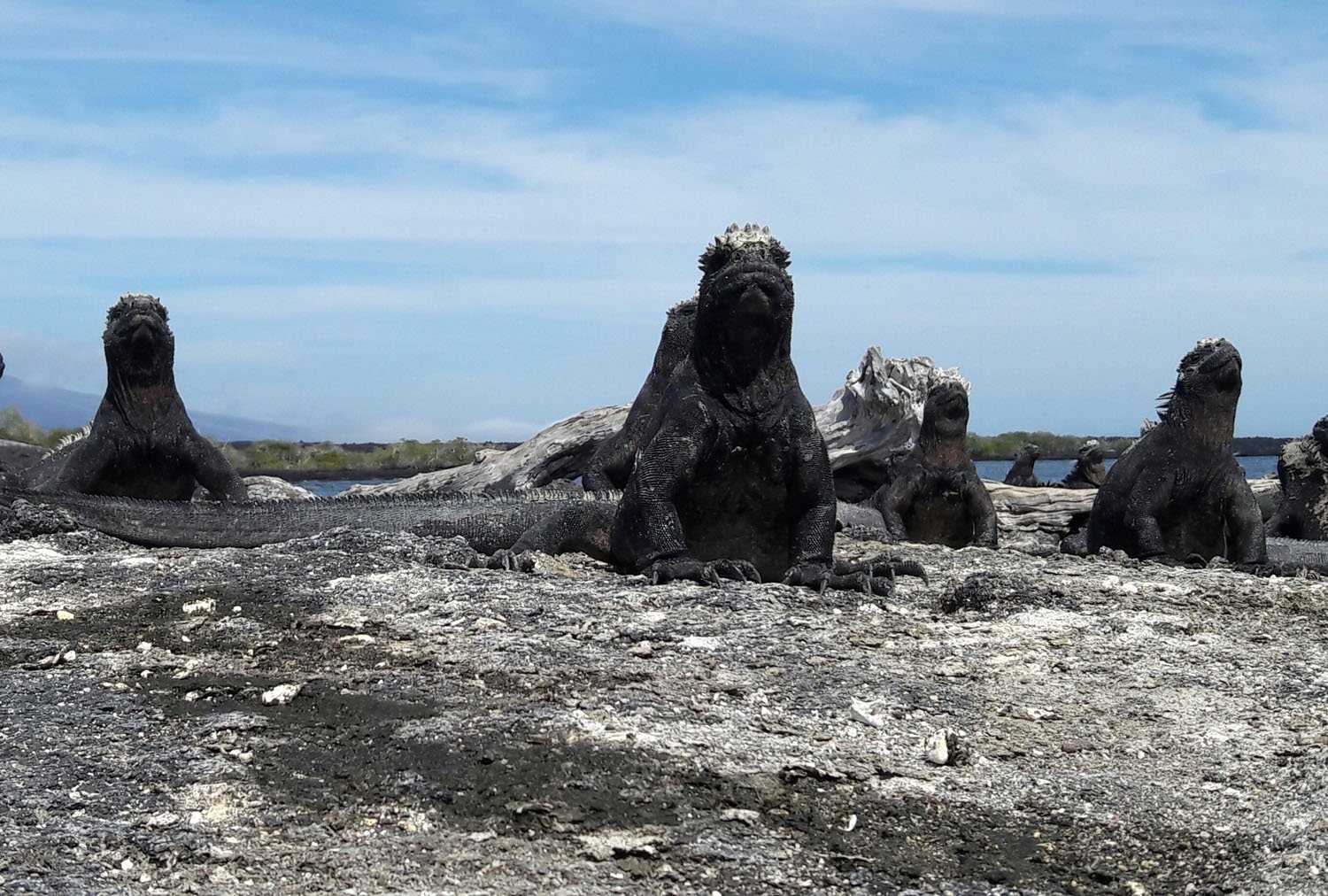The westernmost islands of this archipelago, where our expedition has brought us today, are the youngest islands of them all. The scenery of the shield-shaped volcanoes made it easy for our guests to understand what geological time means, and how erosion shapes the landscapes of the planet.
Our first stop in the morning was Punta Espinoza on Fernandina, an island that takes us back to very beginning of time, being the youngest of the chain. Fernandina is around two hundred and fifty thousand years old, which in geological time is really very young. This environment allowed us the chance to see the very early processes of life taking place, the formation of soil, the simplicity of the ecosystem. The fragility of it all made us realize that this place deserves to be conserved, so that the species that inhabit this part of the planet will not be altered by humans and can continue with its evolutionary processes.
The most abundant inhabitant of this island is the marine iguana, by far the coolest creature of this young archipelago. It was amazing to see the evolutionary changes they have had to go through in order to thrive in this environment. Later we had the opportunity to go snorkeling, and many of us witnessed Galapagos penguins and marine iguanas feeding underwater—it was just extraordinary!
In the afternoon, the flightless cormorants, marine iguanas, Pacific green sea turtles made our Zodiac ride very enjoyable and interesting. As we crossed the equatorial line at sunset time, we realized that the overwhelming power of nature that surrounds us throughout these days have made us feel like a part of this precious planet we call home.









